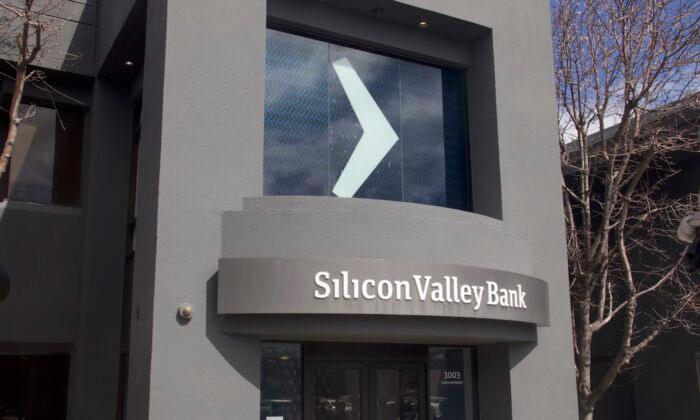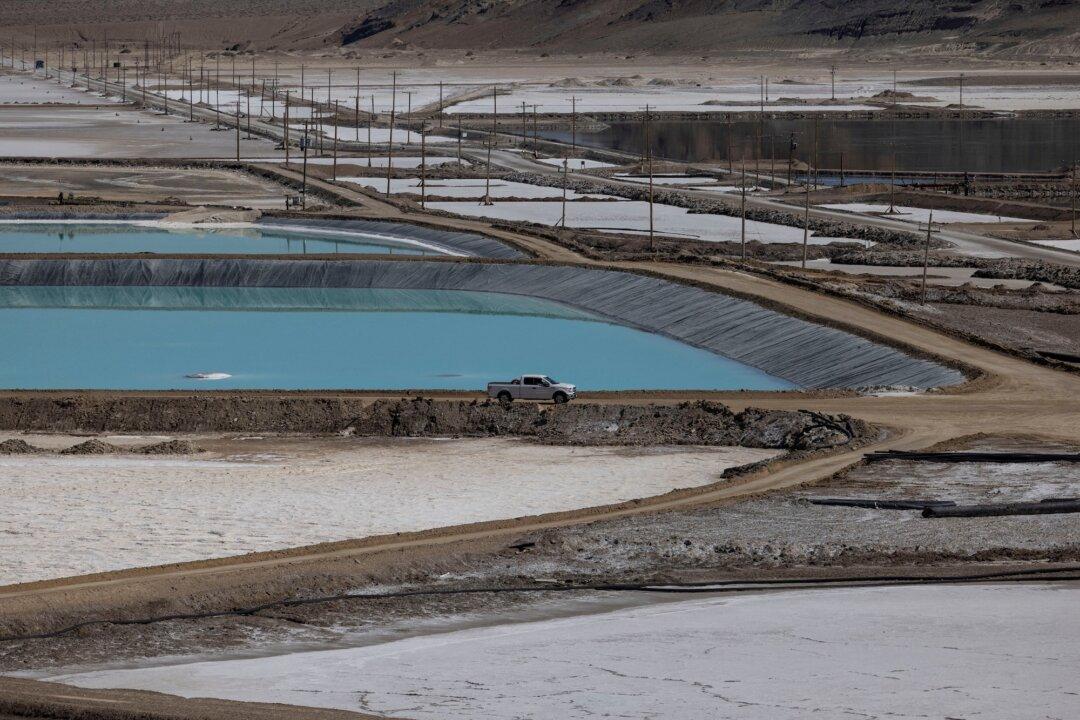Although the immediate threat of broader financial contagion seems to have abated following confidence-building emergency measures taken in the wake of the collapse of Silicon Valley Bank (SVB), experts are now warning of spillovers into the real economy in the form of a credit squeeze that could hit small businesses especially hard.
Lending standards started tightening in early 2022 with the Federal Reserve’s inflation-fighting rate hikes and balance-sheet runoff. Now, they’re getting even tighter amid the early fallout from U.S. banking sector turmoil, with experts warning of a looming credit crunch as regional and community banks pull back on lending activity.
“The recent failure of Silicon Valley Bank and Signature Bank, as well as worries about the rest of the banking system (whether justified or not), has contributed to growing credit tightness,” Peter Earle, an economist at the American Institute for Economic Research, told The Epoch Times in an emailed statement.
“The reduction in corporate bond issuance over the past few weeks is a clear sign of that development.”
U.S. companies with the highest credit ratings sold a record $144 billion of debt securities in February to get ahead of further potential interest-rate hikes, according to a recent report from BMO Capital Markets.
But the failure of SVB—and of Signature Bank just days later—led to deals in the corporate bond market grinding to a near standstill. During the week following the twin bank collapses, there were zero investment-grade bond deals priced, according to PitchBook LCD. Although deals started up again the following week, activity remained weak.
Looming Credit Crunch?
Investors expect the Fed to be nearing the terminal rate of this rate cycle with one more 25 basis-point hike priced in. But even if the Fed hits pause, the risk of a credit squeeze remains, given that banking sector turmoil continues in the deeply interconnected U.S. financial system.“A credit crunch doesn’t require the Fed to continue raising interest rates,” Earle said. “If worries about the health of the banking system continue, spread to commercial real estate, or expand into other sectors, it won’t matter what the Fed does.
“More problems in financial institutions or other sectors of the economy will eventually result in lending being unavailable or only accessible at exorbitant rates. And that will constitute a credit crunch.”

Regulators rolled out emergency measures in the wake of the SVB collapse to calm markets as they feared that depositors would rush to withdraw their savings from smaller banks.
“That was our central concern,” Federal Deposit Insurance Corp. (FDIC) Chairman Martin Gruenberg told the Senate Banking Committee on March 28.
“There was a significant risk of contagion to other institutions. And in fact, over that weekend, we were seeing serious stress at other institutions.”
Gruenberg was referring to the immediate aftermath of the SVB collapse.
Without emergency measures, including additional liquidity from the Fed and the FDIC waiving its $250,000 deposit guarantee cap to offer blanket coverage of all deposits at SVB and Signature, regulators feared that bank runs by uninsured depositors would have intensified and caused problems.
After initial deposit outflow pressure, conditions have begun to stabilize, regulators have said. Still, considerable uncertainty remains about where things go from here.
“What’s unclear for us is how much of these banking stresses are leading to a widespread credit crunch. That credit crunch ... would then slow down the economy. This is something we are monitoring very, very closely,” Neel Kashkari, president of the Federal Reserve Bank of Minneapolis, said in a March 26 interview on CBS.
Kashkari noted that it’s too soon to gauge the “imprint” that bank stress will have on the economy.
During a credit crunch, banks raise their lending standards, making it more difficult for households and businesses to get loans.

Small Businesses in Crosshairs
The Fed’s aggressive rate hikes had already squeezed credit supply, with financial sector upheaval tightening financial conditions further.Federal Reserve Chair Jerome Powell said at a policy meeting last week that stricter lending standards associated with the bank turmoil could be thought of “as being the equivalent of a rate hike or perhaps more than that.”
Powell said it remains unclear how serious the tightening of financial conditions is and how long it will last. But if it’s sustained, “it could easily have a significant macroeconomic effect.”
“This could become a big issue for local communities, regions, and sectors that fear that their access to loans will be curtailed because their traditional banking partners will have to shrink their balance sheets after losing deposits,” he wrote.
El-Erian believes that the bank turmoil will slowly infect the real economy by squeezing access to credit.
“This economic contagion, which will play out over time, threatens to increase the challenges facing an economy that is dealing with inflation, a mishandled interest-rate hiking cycle, declines in personal savings, bouts of financial instability and a slowing global economy.”
Experts told The Epoch Times that small businesses are particularly vulnerable to the current lending dynamics.
“A spillover could spell out a credit crunch for small businesses, which could put SMBs [small- to medium-sized businesses] at an increased risk for default—especially if that business is already struggling,” Daniel Kroytor, founder and director of payment platform TailoredPay, told The Epoch Times in an emailed statement.
“This means lenders could classify more and more companies with either bad credit or little or no credit history as high-risk, and for many small businesses, such a classification could mean the end of the road.”
Trinity Owen, founder and chief financial officer at The Pay at Home Parent, a financial consultancy and education platform, told The Epoch Times in an emailed statement that “the reduced provision of credit due to bank turmoil poses a significant risk for the real economy.”
“Entrepreneurs, in particular, will face significant challenges as they seek funding for their startups,” Owens said.





